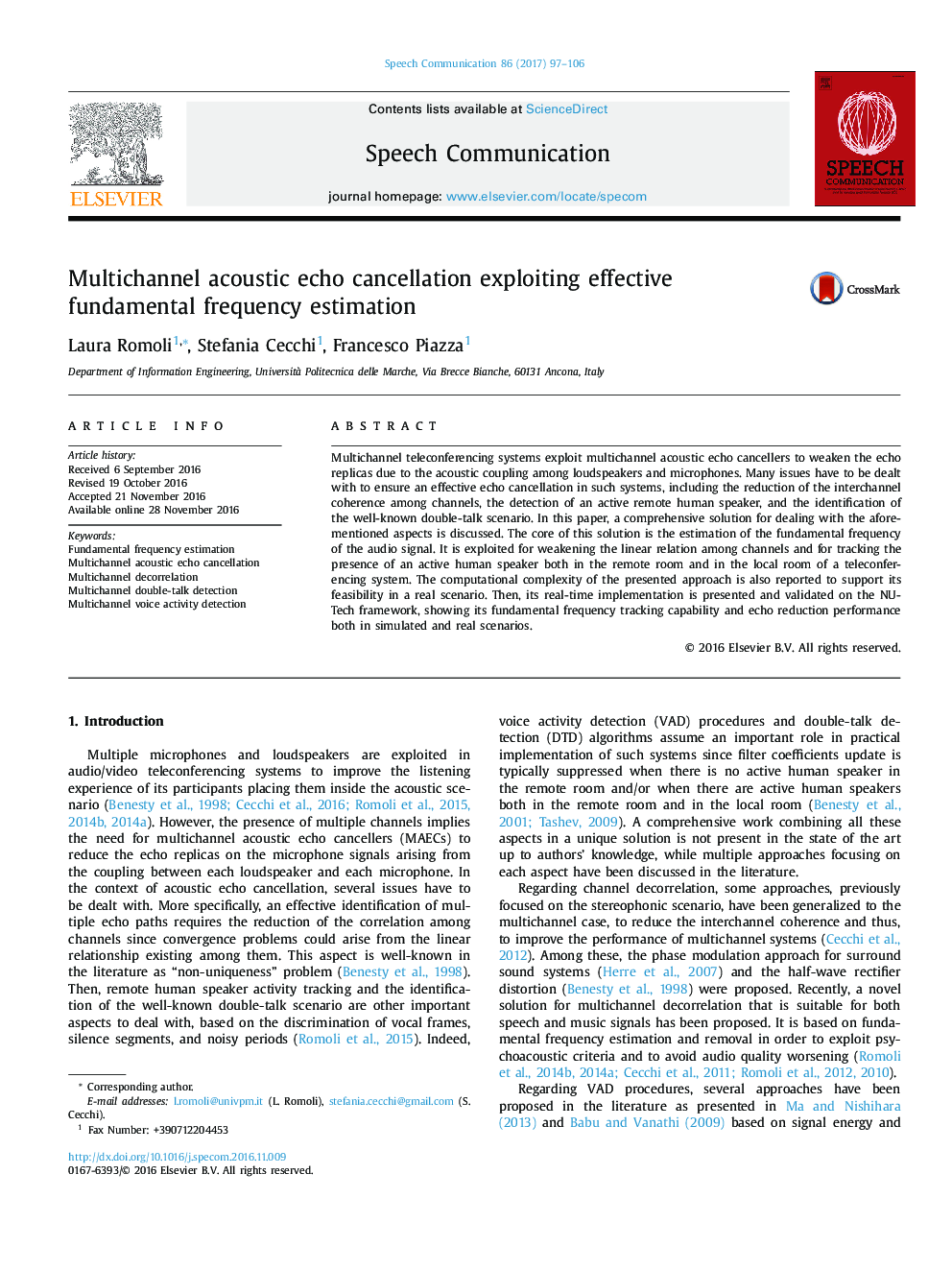| کد مقاله | کد نشریه | سال انتشار | مقاله انگلیسی | نسخه تمام متن |
|---|---|---|---|---|
| 4977839 | 1452014 | 2017 | 10 صفحه PDF | دانلود رایگان |
- A comprehensive solution for multichannel acoustic echo cancellation is proposed.
- The approach is based on the tracking of speakers' fundamental frequency.
- The real-time implementation of the proposed approach on a PC has been carried out.
- The performance has been validated in both simulated and real setups.
Multichannel teleconferencing systems exploit multichannel acoustic echo cancellers to weaken the echo replicas due to the acoustic coupling among loudspeakers and microphones. Many issues have to be dealt with to ensure an effective echo cancellation in such systems, including the reduction of the interchannel coherence among channels, the detection of an active remote human speaker, and the identification of the well-known double-talk scenario. In this paper, a comprehensive solution for dealing with the aforementioned aspects is discussed. The core of this solution is the estimation of the fundamental frequency of the audio signal. It is exploited for weakening the linear relation among channels and for tracking the presence of an active human speaker both in the remote room and in the local room of a teleconferencing system. The computational complexity of the presented approach is also reported to support its feasibility in a real scenario. Then, its real-time implementation is presented and validated on the NU-Tech framework, showing its fundamental frequency tracking capability and echo reduction performance both in simulated and real scenarios.
Journal: Speech Communication - Volume 86, February 2017, Pages 97-106
